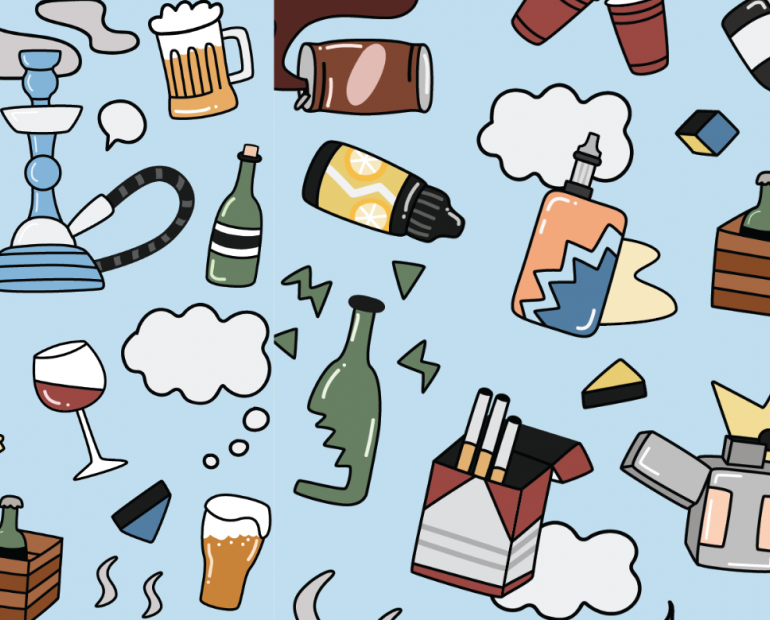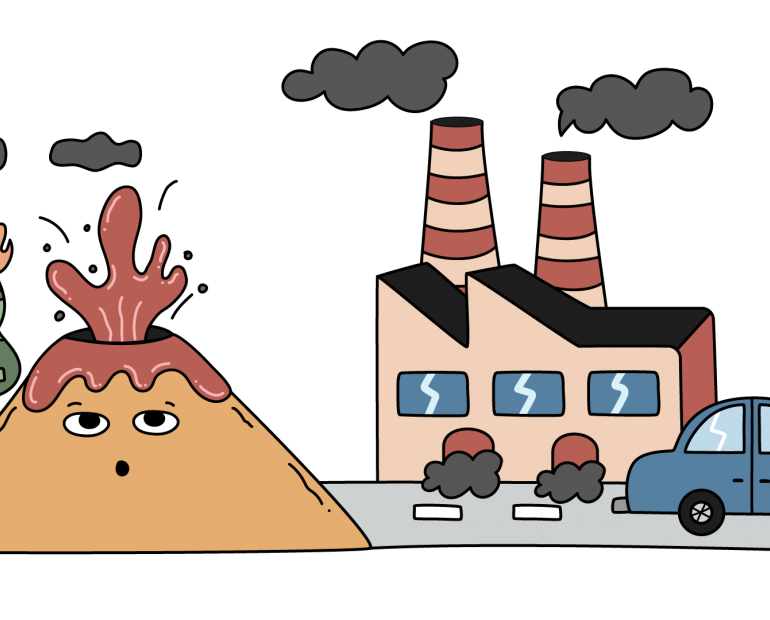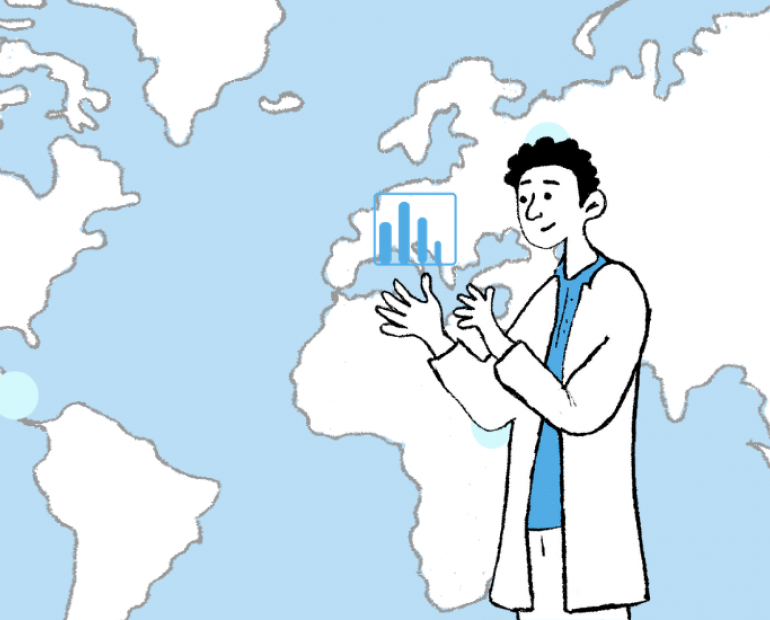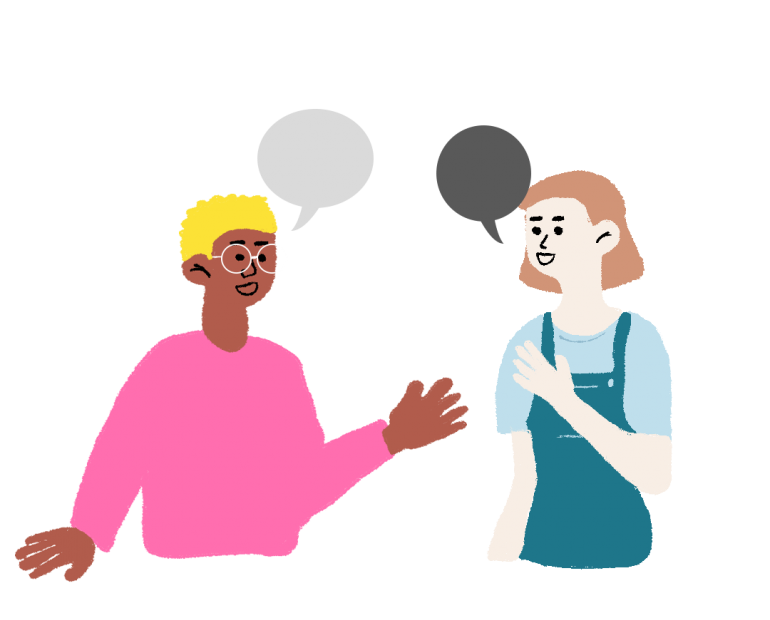Are you interested in taking some small steps for a healthier lifestyle? Let's start with food! 🍕🥬🍝
And check out our Hi-5 For Health series to connect with other youth, get tips from experts, join the discussion, and participate in challenges!
You can download these materials in pdf to review them offline and share it with your friends:
REAL-LIFE, REAL TALK
"Hi everyone! My name is Rafsi and I live in Rabaya, the second-largest city in Indonesia. Indonesia is home to over 46 million young people- can you believe that!? Today, I’m going to walk you through a day in my life, including everything I eat!
I start my mornings off by eating breakfast with my sister and mom, before heading out for the rest of his day. My favorite breakfast dish is usually tuna, or beef, and black pepper. My sister Marsha prefers fish, and especially likes salmon!
But my absolute favorite meal of the day is lunch, not necessarily because of the food, but because I get to take a break from studying to hang out and chill with my friends! Like many of you, we have long school days and don’t always get to exercise or play sports. I’ve been trying to go to the gym more because it makes me feel good and I know it’s good for my health. There are tons of options available for school lunches, some healthier than others... I do my best to eat vegetables as much as possible, but it can be hard sometimes! Today I had rice, eggs, and veggies!
After school, we all usually meet up at the mall. I usually go with my friends to do some schoolwork, hang out, and eat dinner. Most of the food options at the mall are fast foods and today for dinner, I had rice and seafood. My friends had chicken and spaghetti bolognese. You know, there’s definitely information that school, the media, and the internet can teach us about what foods we should eat more of, and what foods should we eat less of. I get it though, sometimes the taste of fast food actually overrides everything. It’s just nice to have an awesome meal!
Different things influence what we eat in a day—from our personal habits to being familiar with what we grew up eating, to what our friends around us eat, or what’s advertised to us. Eating food that’s good for us really does make a difference. It helps us do well in school, gives us more energy throughout the day, and helps us to feel healthy!
Anyway, it’s time for me to get ready for tomorrow, catch you later!"
KNOW THE FACTS
As young people, we often face a disconnect between our intentions to eat well and what we actually eat. We know we should be eating healthily, but what does that actually mean for us? Who and what might be influencing our food choices? Read on to find out more!

1. Global surveys show that 42% of us drink soda at least once a day and 46 % of us eat fast food at least once a week.
Added sugars: sugars that are added during the processing of foods.
Trans-fats: a processed hydrogenated oil that has been strongly linked to heart diseases.
Sodium or Salt: Having a lot of salt increases the risk of high blood pressure.
Fast foods, sodas, and packaged foods contain large amounts of added sugar, trans fats, and sodium. This makes these foods high in calories while offering little to no nutritional value.
What makes us like these foods so much? How might eating these foods too often affect us? Not only are these foods cheap, easy to get, and tasty - they are also packaged, advertised, and created to draw us in.

2. Food advertisements targeting us almost exclusively promote highly processed foods that are loaded with salt, unhealthy fat, and added sugar.
Without even knowing it, what you eat can often be influenced by the food industry. Do you constantly see food-related advertisements on billboards, TV, radio, social media, celebrity endorsements?
Check out this video from BiteBack 2030:
The food industry also tries to advertise “healthy food” to us using marketing gimmicks and buzzwords to attract us.

“Healthy” buzzwords & fads to keep an eye out for:
-
“Natural” or “All Natural” often means that a product doesn’t contain artificial flavors or colors. However, this doesn’t mean it might not still have a lot of sugar or sodium. For example, some sodas are considered “natural,” but contains a lot of added sugar.
-
“Organic” means foods farmed without harmful chemicals. In some countries, certification is given to foods that are organic. But, even without an organic label, you can look for locally produced foods that follow a sustainable way of farming. However, remember, not all food that is produced organically is healthy – they can contain a lot of unhealthy fats, sugar, or sodium.
-
“Fat-free or “low fat”: This does not mean calorie-free. In fact, fat-free foods may have the same amount or more calories as full-fat food due to added sugars. For example, fat-free yogurt is often filled with sugar to compensate for flavor loss.
3. We’ve all grown up hearing that we should eat our fruits and vegetables, but why?

-
Boost your mood and brainpower by having a diet rich in healthy fats and proteins like seafood, fish, beans and legumes, olive oil, yogurt, and nuts.
-
Take care of your skin by eating more vegetables, fruits, and fish and by drinking water. What we eat/drink can contribute to the development of acne!
-
Build up your immunity by having more raw fruits and vegetables which are rich sources of vitamins and minerals that are important for fighting off infections.
-
Reduce your risk of long-term health conditions like diabetes, high blood pressure, heart disease, stroke, and cancer by eating less processed and fast foods that are high in unhealthy fat, salt, and added sugar.
-
Support the rapid changes our body and brain are going through: at this time in our lives, our brain and body require nutritious ingredients in order to grow
-
Give you energy for the daily activities you do: eating foods that are nutritious helps us focus at school or at work, play sports, play music, and even just hang out with our friends!

What our bodies truly need is a balance of different nutrients that make us feel better now, and keep us healthy in the future.
So what’s on my plate? No single food will contain all the nutrients you need and your food choices might also depend on your personal taste, but it’s important to try and include a balance of nutrients (proteins, carbohydrates, fats, vitamins, and minerals) in the form of
● Fruits and vegetables
● Whole grains
● Nuts and seeds
● Animal source foods (meat, poultry, eggs, and dairy foods)
Explore expert advice on healthy eating in your country, here.
4. Did you know that in some countries up to 50% of us don’t have enough iron in our bodies?
When you don’t have enough iron, you may feel tired, weak, dizzy, and light-headed. This makes it hard for you to be active and concentrate in school or work.

Iron helps create red blood cells which are needed to carry oxygen from our lungs to the rest of our bodies.
Our need for iron goes up in adolescence because our bodies are growing rapidly.
The need for iron goes up even more for girls who start their period.
We can get iron from foods like nuts, fruits, and vegetables – especially green leafy vegetables.
Lentils, beans, tofu, and meat are also good sources of iron.

5. Did you know that up to 90% of our bone mass is set by the time we turn 20?
Our bones grow rapidly during our adolescent years, so now is our best chance to build strong bones for life. By getting the right amount of calcium and vitamin D in your daily diet.
- Calcium is needed to build strong bones and teeth and Vitamin D helps your body effectively absorb calcium.
- You can get calcium from a variety of foods like dairy products, soy, leafy greens, almonds, figs, fish, pinto beans, chickpeas.
- Substance use interferes with your body’s ability to absorb calcium.
THINK ABOUT IT

-
Do you feel like you have control over what you eat, when you eat, and where you eat? Do your friends? What about young people around the world?
-
If your school hired you to change the lunch menu, what would be one item on the menu that you would remove? Why? What would you replace it with?
-
What is one food/drink product that you feel is marketed to you or young people in general? Are you interested in trying this product? Do you consider this to be a healthy or unhealthy product?
-
What are 3 things that would make it easier for you to eat healthier?
-
All barriers aside, If there was one new nutritious food item that you could incorporate into your daily diet, what would it be and why?
MAKE A DIFFERENCE

Picture This
Spot the Junk Food Marketing: Use your investigative skills to capture photos of junk food advertising that you see on a normal day. Share these images on social media and tag @voicesofyouth and @BiteBack2030!
Create your own healthy and delicious fast food menu
If you only had access to 5 ingredients and 30 minutes, what is a quick and healthy meal you could create? Share your recipe with your friends on social media and tag @voicesofyouth and @BiteBack2030.

Help crowdsource information about food in your country!
Check out this website and help us add the foods that you eat to this food product database! This will help other people and even researchers around the world.
Express Yourself
Share your thoughts about food and diet by submitting a piece to Voices of Youth.
Pass it on
Share something you’ve learned here with one other person and spark a conversation! These conversations can be digital through platforms such as Streamyard, Zoom, Facebook Live, or Youtube or in person if it can be done safely.
The content is this learning module was developed by UNICEF in collaboration with the UNICEF-AstraZeneca Young Health Programme Young Leaders. Learn more about their vision for a healthier future here. Art by Vania Dhianisya and Njung'e Wanjiru.
UNICEF does not endorse any company, product or service.





